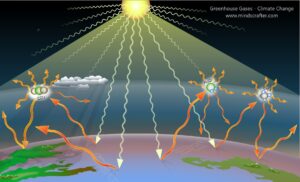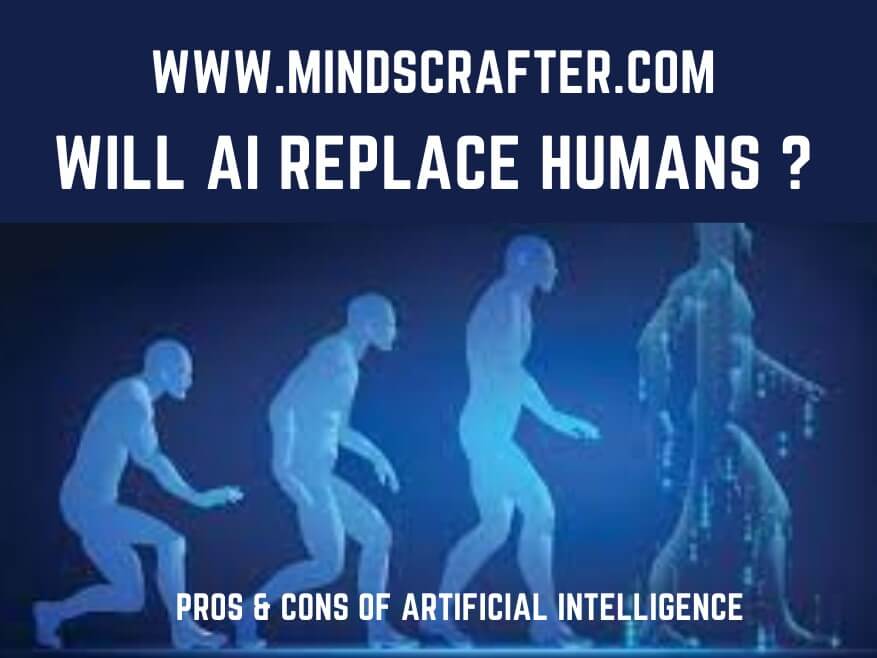
From Forecasting to Solutions: How AI is Helping Combat Climate Change
Climate change is one of the biggest challenges of our time, with its devastating effects being felt across the globe. From rising sea levels to extreme weather conditions, the consequences of this phenomenon are becoming more pronounced by the day. However, with the help of Artificial Intelligence (AI), we can now forecast and combat climate change in once unimaginable ways. AI-powered technologies are being used to analyze vast amounts of data, predict weather patterns, and even reduce carbon emissions in industries like transportation and energy.
This short article will explore that how Artificial Intelligence is transforming the fight against climate change, from forecasting to solutions. This will delve into some of the most innovative AI-powered solutions being developed to tackle this global crisis and how they are helping us to build a more sustainable future.
Understanding Climate Change:

Climate change is a complex phenomenon caused by various factors, including human activity, natural processes, and external forces such as solar radiation. The primary driver of climate change is the increase in atmospheric concentrations of greenhouse gases (GHGs) such as carbon dioxide, methane, and nitrous oxide. These gases trap heat in the Earth’s atmosphere, causing the planet’s temperature to rise. This warming effect leads to various environmental impacts, including melting glaciers, rising sea levels, and more frequent and severe weather events.
The impacts of climate change are uneven across the globe. Depending on geography, population density, and economic development, some regions are more vulnerable than others. For example, low-lying coastal areas are particularly susceptible to sea-level rise, while regions that rely heavily on agriculture are vulnerable to changes in precipitation patterns and extreme weather events.
Despite the complexity of climate change, there is a broad scientific consensus that human activities are the primary driver of this phenomenon. The Intergovernmental Panel on Climate Change (IPCC), a global body of climate experts, has concluded that it is highly likely that human activities have caused more than half of the observed increase in global average surface temperature since the mid-20th century.
AI in Climate Change Research:
AI is being used to analyze vast amounts of data related to climate change, from weather patterns to carbon emissions. These technologies help researchers to identify trends and prints that would be difficult or impossible to discern through manual analysis.
One example of AI-powered climate research is using machine learning algorithms to analyze satellite data on forest cover. By analyzing changes in forest cover over time, researchers can identify areas where deforestation occurs and develop strategies to mitigate this trend. Researchers are also using AI to analyze data on ocean currents, which provides insights into changes in sea levels and ocean temperatures.
In climate research, AI is actively utilized in climate modeling. Climate models are complex computer programs that simulate the Earth’s climate system, including temperature patterns, precipitation, and atmospheric circulation. By running these models with different inputs, researchers can explore how the climate system might respond to different scenarios, such as changes in greenhouse gas emissions or land use patterns. Researchers are using AI to improve the accuracy of these models by employing it to identify the most critical variables and refine the model’s parameters.
Researchers use AI in climate research to analyze carbon emissions data and identify effective emission reduction areas. By analyzing data from various industries and sectors, researchers can pinpoint opportunities for energy efficiency improvements, such as using AI-powered systems to analyze energy consumption in buildings.
AI for Climate Change Mitigation:
AI is being used to develop solutions that can help reduce greenhouse gas emissions and mitigate the impacts of climate change. One area where AI is being applied is in renewable energy systems. AI-powered systems are being used to optimize the performance of solar and wind energy systems by predicting weather patterns and adjusting system settings to maximize energy output.
AI is also used to optimize transportation systems, a significant source of greenhouse gas emissions. AI-powered systems are being used to optimize traffic flow and reduce congestion, which can help reduce vehicle emissions. Autonomous vehicles, which are powered by AI systems, have the potential to further reduce emissions by optimizing route planning and reducing fuel consumption.
In agriculture AI is applying to optimize crop yields. By analyzing soil moisture and nutrient data, AI systems adjust irrigation and fertilizer use. This reduces land requirement, curbing deforestation and climate change-inducing land-use changes.
AI for Climate Change Adaptation:
In addition to mitigation, AI is being used to develop solutions that can help communities adapt to the impacts of climate change. One area where AI is being applied is in disaster response. AI-powered systems are being used to predict and track extreme weather events, such as hurricanes and floods, which can help emergency responders to prepare and respond more effectively.
AI is also being used to develop solutions that can help communities adapt to changes in water availability. For example, AI-powered systems are being used to optimize water management systems by predicting changes in water availability and adjusting water use accordingly. This can help reduce the impacts of droughts and other water-related crises.
AI finds application in urban planning, optimizing building and infrastructure design to enhance resilience against extreme weather. For instance, buildings can withstand high winds and flooding, while green infrastructure absorbs water and mitigates urban heat islands.
AI for Climate Change Forecasting:
Climate change forecasts is using Artificial Intelligence for analyzing vast data on weather patterns and ocean currents. This enhances the accuracy and precision of predictions. For instance, AI-powered systems employ machine learning algorithms to forecast sea-level rise more accurately based on historical data.
In weather forecasting, AI creates models that enable better preparation for extreme events. For example, AI systems detect and predict wildfires, aiding emergency responses. Additionally, AI helps develop early warning systems for droughts and water-related crises, empowering communities to enhance their preparedness and response capabilities.
Examples of AI Applications in Climate Change:
Numerous examples of AI-powered solutions are being developed to combat climate change. One example is the use of AI-powered drones to monitor forest health.
These drones gather data on forest cover, biomass, and more, enabling the identification of deforestation hotspots. This data is then used for the development of strategies to address this issue.
Another example is using AI-powered systems to optimize energy consumption in buildings. These systems can analyze data on energy use patterns and adjust lighting, heating, and cooling systems to reduce energy consumption. This can help reduce the carbon footprint of buildings, which are a significant source of greenhouse gas emissions.
AI is also being used to develop more efficient and sustainable transportation systems. For example, AI-powered systems are being used to optimize traffic flow and reduce congestion, which can help reduce vehicle emissions. Autonomous vehicles, which are powered by AI systems, have the potential to further reduce emissions by optimizing route planning and reducing fuel consumption.
Challenges with AI in Climate Change:
While AI has great potential to support efforts to combat climate change, its use has also associated challenges. One challenge is the need for large amounts of data to train AI models. In some cases, data on climate-related phenomena may be limited, making it challenging to develop accurate and reliable models.
Transparency and accountability pose challenges for AI systems. As they become more complex and autonomous, understanding their decision-making and potential impacts becomes difficult. Ethical concerns arise when AI is used to make decisions with significant social or environmental consequences.
Ethical Considerations of AI in Climate Change:
The increasing use of AI in climate change research and mitigation raises ethical concerns. One concern is the potential for AI to reinforce inequalities. For instance, if AI allocates resources, it may perpetuate existing social and economic disparities.
Unintended consequences are another worry. As AI becomes more complex and autonomous, predicting all its impacts becomes challenging. This poses risks like reinforcing power structures or worsening societal and environmental issues.
Bias in AI systems is also a concern. AI’s fairness depends on the training data it receives. If the data is biased, AI may unintentionally amplify and perpetuate such biases.
Future of AI and Climate Change:
AI in climate change applications presents challenges and ethical concerns. However, optimism is growing about its potential to combat climate change. As AI systems advance, they can enhance mitigation and adaptation efforts effectively.
Future AI research aims to develop precise climate models for better strategies. Transparency and accountability of AI systems are also crucial to address concerns about bias and unintended consequences.
The future of AI and climate change hinges on responsible development and deployment. By aligning with societal goals, AI can contribute to a sustainable and equitable future.
Summary / Conclusion:
In conclusion, AI is transforming the fight against climate change, from forecasting to solutions. AI-powered technologies are being used to analyze vast amounts of data, predict weather patterns, and even reduce carbon emissions in industries like transportation and energy. AI is being used to develop solutions that can help reduce greenhouse gas emissions and mitigate the impacts of climate change.
Still AI is in developing phase. It is proposing solutions for climate change adaptation. Despite challenges and ethical concerns, there is growing optimism regarding AI’s potential in combating climate change. As we delve into AI’s role, it is crucial to align its use with broader societal goals and values.
Source: YouTube Channel : @ClimateAdam

